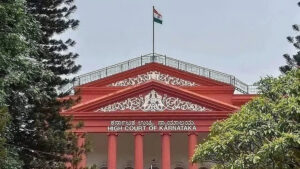In February 2025, India’s academic world was shaken by one of the most significant corruption scandals in recent memory — the NAAC Rating Bribery Scandal. At the heart of this storm was the very institution responsible for evaluating the quality of higher education in India — the National Assessment and Accreditation Council (NAAC). The credibility of the NAAC took a massive hit when the Central Bureau of Investigation (CBI) arrested its then-chairman and six members of an inspection panel on charges of accepting bribes in exchange for awarding favourable accreditation scores to several institutions, including reputed names like Jawaharlal Nehru University (JNU) and KL University.
Understanding NAAC and Its Importance
The NAAC is an autonomous body under the University Grants Commission (UGC), tasked with assessing and accrediting higher education institutions across India. Accreditation from NAAC is not just a marker of academic excellence; it plays a crucial role in determining eligibility for government funding, student enrolment rates, faculty recruitment, and international recognition. A high NAAC score can dramatically improve an institution’s profile, while a poor grade can result in a decline in both credibility and student interest.
Given the high stakes, the NAAC accreditation process has always been viewed as sacrosanct — a merit-based, transparent assessment that reflects an institution’s true standing in academia. Unfortunately, this image has been tainted by the revelations of large-scale manipulation and corruption.
The Scandal Unfolds
The scandal came to light after months of surveillance and intelligence gathering by the CBI. The arrests followed a series of raids across 20 different locations in multiple states. These raids yielded damning evidence: recordings, financial transactions, documents, and digital communication revealing a well-coordinated network of officials who solicited and accepted bribes to artificially inflate the scores of participating institutions.
What was even more troubling was the inclusion of high-profile universities in the investigation, such as JNU — a central university of national importance — and KL University, a prominent private institution. The fact that such reputed names were under the scanner sent shockwaves through the academic and administrative echelons of the country.
The Modus Operandi
The accused officials reportedly manipulated assessment criteria during on-site inspections. In exchange for bribes, they awarded higher marks in areas such as infrastructure, faculty strength, research output, student satisfaction, and placement records. Institutions were allegedly coached on how to present false or exaggerated data during evaluations.
In some cases, visiting panels skipped on-site visits entirely, simply awarding marks based on doctored documentation. This not only undermined the credibility of the accreditation process but also placed genuinely deserving institutions at a disadvantage. The integrity of NAAC’s internal checks was thoroughly compromised.
Fallout of the Scandal
The ramifications of this scandal were widespread:
-
Loss of Public Trust: Institutions that had previously boasted of their NAAC scores found themselves under scrutiny. Stakeholders — including students, parents, and employers — began questioning the authenticity of the ratings.
-
Review of Accreditation Scores: The Ministry of Education ordered a re-evaluation of institutions that had recently received high NAAC grades, particularly those assessed by the implicated panel members.
-
Reputation Damage to Indian Academia: Internationally, the scandal dented India’s academic credibility. Accreditation ratings often play a role in cross-border collaborations, faculty exchange programs, and international admissions. This scandal raised doubts over India’s quality assurance systems in education.
-
Policy and System Reforms: In response to the exposure, there were immediate calls for reform. Discussions were initiated around digitizing the entire accreditation process, incorporating independent third-party audits, and introducing stricter oversight and rotation policies for panel members.
-
Criminal Proceedings: Those arrested are now facing serious charges under anti-corruption laws. Legal proceedings are underway, and more arrests may follow as the investigation expands to cover additional institutions and individuals linked to the scandal.
Broader Questions Raised
The NAAC bribery case is not an isolated incident but symptomatic of a deeper malaise in the higher education system — one where quality is often overshadowed by political influence, institutional lobbying, and administrative opacity. It raises troubling questions:
-
How many institutions might have been undeservingly accredited?
-
How many students may have made career decisions based on falsified institutional ratings?
-
To what extent are regulatory bodies in India vulnerable to manipulation and lobbying?
The Way Forward
In light of this disgraceful chapter, it is essential to treat this scandal not merely as an instance of individual misconduct but as a wake-up call for systemic overhaul.
-
Independent Oversight: There is a pressing need to establish independent regulatory bodies to audit and oversee the accreditation process.
-
Whistleblower Protections: Employees within NAAC or associated institutions who report unethical practices should be given legal protection and anonymity.
-
Data Transparency: Institutions must be mandated to publish key academic and operational data in the public domain, validated by independent verifiers.
-
Stakeholder Inclusion: Students, alumni, employers, and faculty should be allowed to contribute to the evaluation process through structured feedback.
-
Use of Technology: Artificial Intelligence and data analytics can be deployed to cross-verify institutional claims, reducing the subjectivity and vulnerability of the system.
Conclusion
The NAAC Rating Bribery Scandal is a stark reminder that even the most respected pillars of education are not immune to corruption. However, the scandal also provides an opportunity for introspection and reform. If approached constructively, this crisis can become a turning point for Indian academia — pushing the system toward greater accountability, transparency, and genuine meritocracy.
Our Services – FACTS Transcripts
We at FACTS Transcripts assist in various services, including:
- Mark Sheet Transcripts
- E-Transcripts
- Duplicate Mark Sheets & Degree Certificates
- Medium of Instructions Certificates
- Attestations
- HRD Attestation / Apostille Services
- ECA (Educational Credentials Assessment)
Trusted by leading global verification organizations, including WES, IQAS, PEBC, NDEB, NASBA, CAPR, NZQA, ICAS, NCESS, ICES, ECE, eduPASS, ACEI, GCEUS, Comparative Education Services, NNAS, NCA, SAQA, QMAS, FORAC, Australian Pharmacy Council, and more.
FACTS Transcripts – The preferred choice for university document verification worldwide. We ensure a hassle-free process for obtaining your transcripts.








